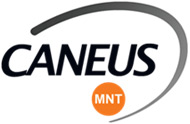|
Dr. Joachim Post |
| |
 |
Dr. Joachim Post is an Expert for Space Technology
for Disaster Management at UN-SPIDER / UNOOSA.
Previously he was research scientist DLR in the
field of Earth observation and was responsible for
risk assessment research. He was working in several
international projects, e.g. developing and
implementing tsunami risk assessment and knowledge
for early warning in Indonesia (GITEWS
project), being principal investigator in
several projects dealing with applied risk analysis
research, e.g. CLIMB (www.climb-fp7.eu)
in Europe, Flood Risk map study Singapore, SASSCAL (www.sasscal.org)
and WASCAL (www.wascal.org)
projects in Africa, Multi-hazard and Information
System in Chile project and in the DLR Center for
Satellite Based Crisis Information ZKI (www.zki.dlr.de)
as rapid mapping coordinator. He holds a diploma in
environmental sciences from University of Trier
(Germany, 2002) and a Ph. D. in Geo-ecology from
University of Potsdam (Germany, 2006) obtained while
working for the Potsdam Institute for Climate Impact
Research. He studied also at Utrecht University
(Netherlands) and University of Aberdeen (UK). He is
an expert in environmental and natural hazards risk
and vulnerability assessments, early warning,
climate impact research, earth observation and
simulation modelling. His main interest is in
generating and transferring knowledge for risk
reduction. |
|
|
|
|
|
Abstract |
|
|
|
|
|
The case of flood
monitoring and the importance of sharing recommended
practices |
|
|
|
|
|
Geodata and satellite imagery are decisive for
successful disaster risk management. This will be
most likely also reflected in the Post-2015
framework for disaster risk reduction to be adopted
in March 2015 in Sendai, Japan. It is expected that
the new framework will focus on monitoring output
and outcome indicators. These indicators quantify
underlying drivers of risk (e.g. increasing hazard
exposure, urban dynamics and environmental
degradation), disaster losses, and others. This
opens the door to increased operational use of Earth
observation as a coherent data and information
source. However, the existing gap between scientific
outcomes and practical implementation often hinders
the exploitation of the full potential of remote
sensing for disaster risk management. Here we show
the approach of the United Nations Platform for
Space-based information for Disaster Management and
Emergency Response (UN-SPIDER) to bridge the gap
between science and practice by promoting
"recommended practices" based on expertise from the
space and disaster communities. The objective is to
provide recommended practices according to defined
context-specific user requirements and information
needs for the full disaster management cycle as well
as to defined quality criteria. While considering
best scientific and technological practices, human
and financial resource constraints are also taken
into account. We will highlight this through pilot
recommended practices, which were jointly developed
with the UN-SPIDER network of Regional Support
Offices and other partners. The practices are
available via the UN-SPIDER Knowledge Portal (www.un-spider.org)
in an application-oriented and user-friendly
interface. UN-SPIDER would like to take the
opportunity to invite stakeholders to contribute to
the further development of recommended practices as
well as to participate in the peer group of experts
to support the review and validation process. The
presented approach will contribute to an enhanced
use of space-based information for disaster risk
management and help reaching the goals of the
Post-2015 framework. |
|
|
|
|
|


